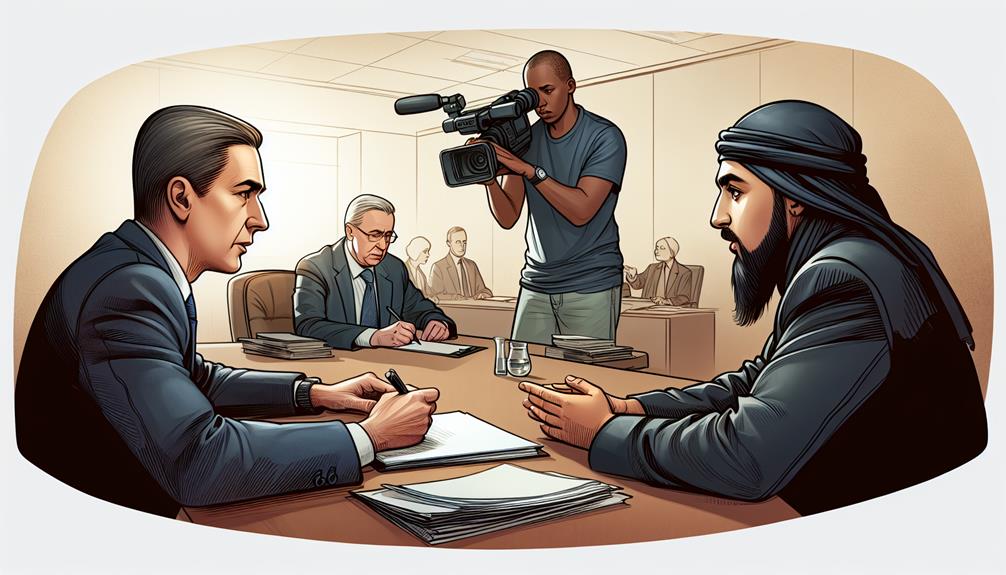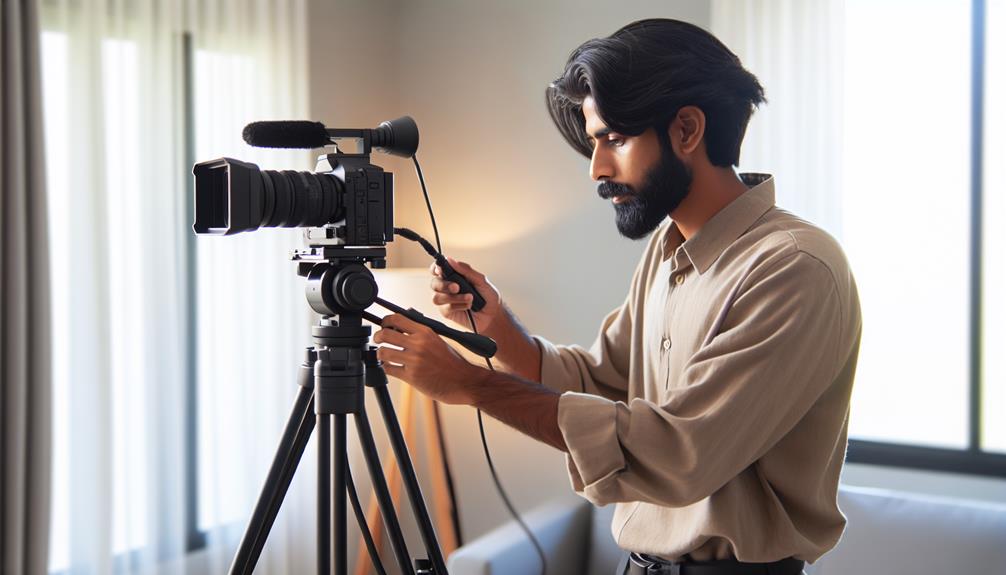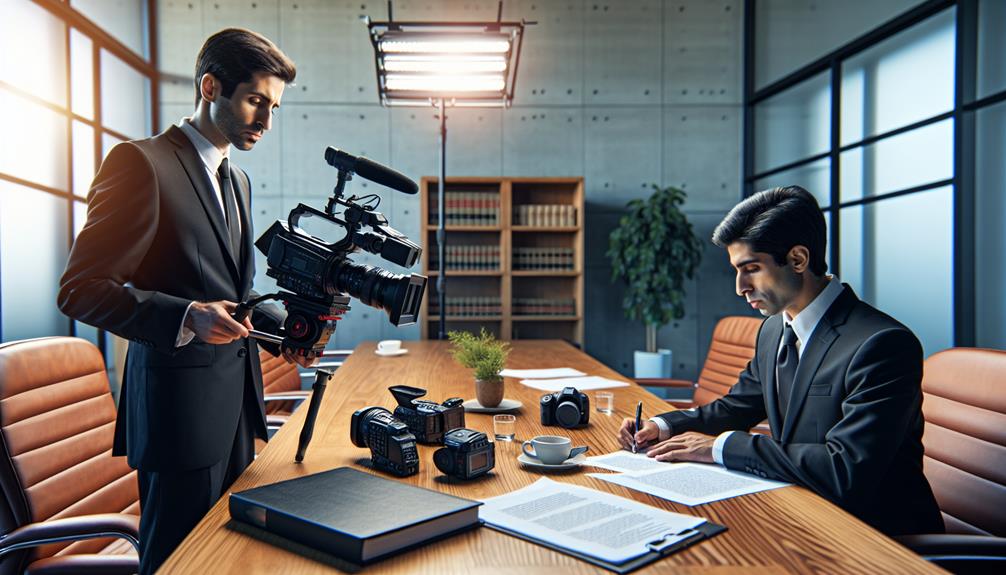Like a pilot preparing for their first solo flight, taking your first video deposition can be a nerve-wracking experience. However, with the right steps and preparation, you can navigate this unfamiliar territory with confidence.
From understanding the purpose of a deposition to practicing and rehearsing your testimony, there are key strategies that can help you make a strong impression.
So, grab a pen and paper, because in this discussion, I'll be sharing some insightful tips that will ensure you're ready to soar through your first video deposition.
Key Takeaways
- Thorough preparation is essential for a smooth and seamless video deposition experience.
- Organizing and prioritizing key points helps present a compelling case during the deposition.
- Pay attention to appearance and environment, ensuring appropriate lighting, dress code, and a professional setting.
- Familiarize yourself with video deposition technology and utilize learning resources for increased confidence and troubleshooting tips.
Understanding the Purpose

Understanding the purpose of a video deposition is crucial for effective preparation and presentation. Video depositions have become an essential part of legal proceedings, allowing attorneys to capture the testimony of witnesses and preserve it for future use. However, simply conducting a video deposition isn't enough; one must understand the process and the importance of preparation to make the most of this powerful tool.
Video depositions offer numerous advantages over traditional written transcripts. They provide a visual and auditory record of the witness's testimony, allowing for a more accurate and nuanced understanding of their statements. Additionally, video depositions can be played back during trial, enabling the jury to observe the witness's demeanor and assess their credibility firsthand.
To fully leverage the benefits of video depositions, it's essential to thoroughly prepare. This includes conducting thorough research on the case, identifying key areas of inquiry, and crafting compelling questions. It's also crucial to familiarize oneself with the equipment and software used for recording and playback, ensuring a smooth and seamless deposition experience.
Organizing Your Key Points
Now that we've a clear understanding of the purpose and advantages of video depositions, let's explore the crucial step of organizing our key points.
When it comes to video depositions, strategic organization is essential for presenting a compelling case. To effectively organize your key points, start by brainstorming all the relevant information and ideas related to your case. This will allow you to gather a comprehensive list of points that need to be addressed during the deposition.
Once you have brainstormed your key points, the next step is to create an outline. The outline will serve as a roadmap for your deposition, ensuring that you cover all the necessary information in a logical and coherent manner. It will also help you stay focused and prevent you from getting sidetracked during the deposition.
When creating the outline, prioritize your key points based on their importance and relevance to the case. This will help you present a strong and persuasive argument. Remember to keep your outline concise and organized, so it's easy to reference during the deposition.
Preparing Your Appearance and Environment

To make a strong impression during a video deposition, it's crucial to carefully consider your appearance and create an environment that conveys professionalism and credibility.
One important aspect to consider is the lighting setup. Ensure that you have sufficient lighting that illuminates your face clearly and evenly. Avoid harsh shadows or overly bright lights that can be distracting. Experiment with different lighting angles and intensities to find the most flattering and natural-looking setup.
Another key factor in preparing your appearance is following a dress code that reflects the seriousness of the deposition. Dress in professional attire that's appropriate for the occasion. Avoid loud patterns or flashy colors that may detract from your credibility. Opt for neutral or muted tones that convey a sense of professionalism and respect.
In addition to your appearance, creating a professional environment is equally important. Choose a quiet and well-lit space for the deposition. Remove any potential distractions, such as clutter or personal items, from the background. Consider using a neutral backdrop or a bookshelf to add a touch of sophistication to the setting.
Familiarizing Yourself With the Technology
As I familiarize myself with the technology, I'm amazed at the advancements that have revolutionized the way video depositions are conducted. Learning resources have become readily available, providing a wealth of information and guidance to help me navigate this new terrain. Online videos, tutorials, and webinars have become my go-to sources for understanding the ins and outs of video deposition technology.
In addition to learning resources, troubleshooting tips have become essential in ensuring a smooth video deposition experience. From connectivity issues to audio and visual glitches, technology can sometimes be unpredictable. However, with troubleshooting tips at my disposal, I feel more confident in addressing any challenges that may arise. These tips provide practical solutions and workarounds, allowing me to troubleshoot and resolve issues swiftly.
Practicing and Rehearsing

With my newfound understanding of video deposition technology, I'm ready to dive into the crucial process of practicing and rehearsing.
As with any new skill, practicing techniques are essential in order to build confidence and ensure a successful video deposition. One effective technique is to simulate the actual deposition environment as closely as possible during practice sessions. This includes setting up the video equipment, positioning the cameras, and familiarizing yourself with the layout of the room. By doing so, you can become comfortable with the equipment and minimize any potential technical difficulties during the actual deposition.
Additionally, it's important to rehearse your questioning and presentation skills. Practice asking clear and concise questions, paying attention to your tone and body language. Consider using visual aids or exhibits to enhance your presentation and reinforce key points. Rehearsing these aspects of your deposition will help you to appear confident and professional.
Moreover, practicing and rehearsing allows you to identify any weak areas in your performance and make necessary adjustments. Take note of any stumbling points or areas where you lack confidence, and spend extra time practicing those specific aspects. By doing so, you can improve your overall presentation and ensure a smoother and more effective video deposition.
Conclusion
Preparing for your first video deposition can seem daunting, but by understanding the purpose, organizing your key points, preparing your appearance and environment, familiarizing yourself with the technology, and practicing beforehand, you can ensure a successful outcome.
Remember, confidence and preparation are key when it comes to making a strong impression during a video deposition.
So, take the time to prepare, rehearse, and showcase your expertise with clarity and professionalism.

